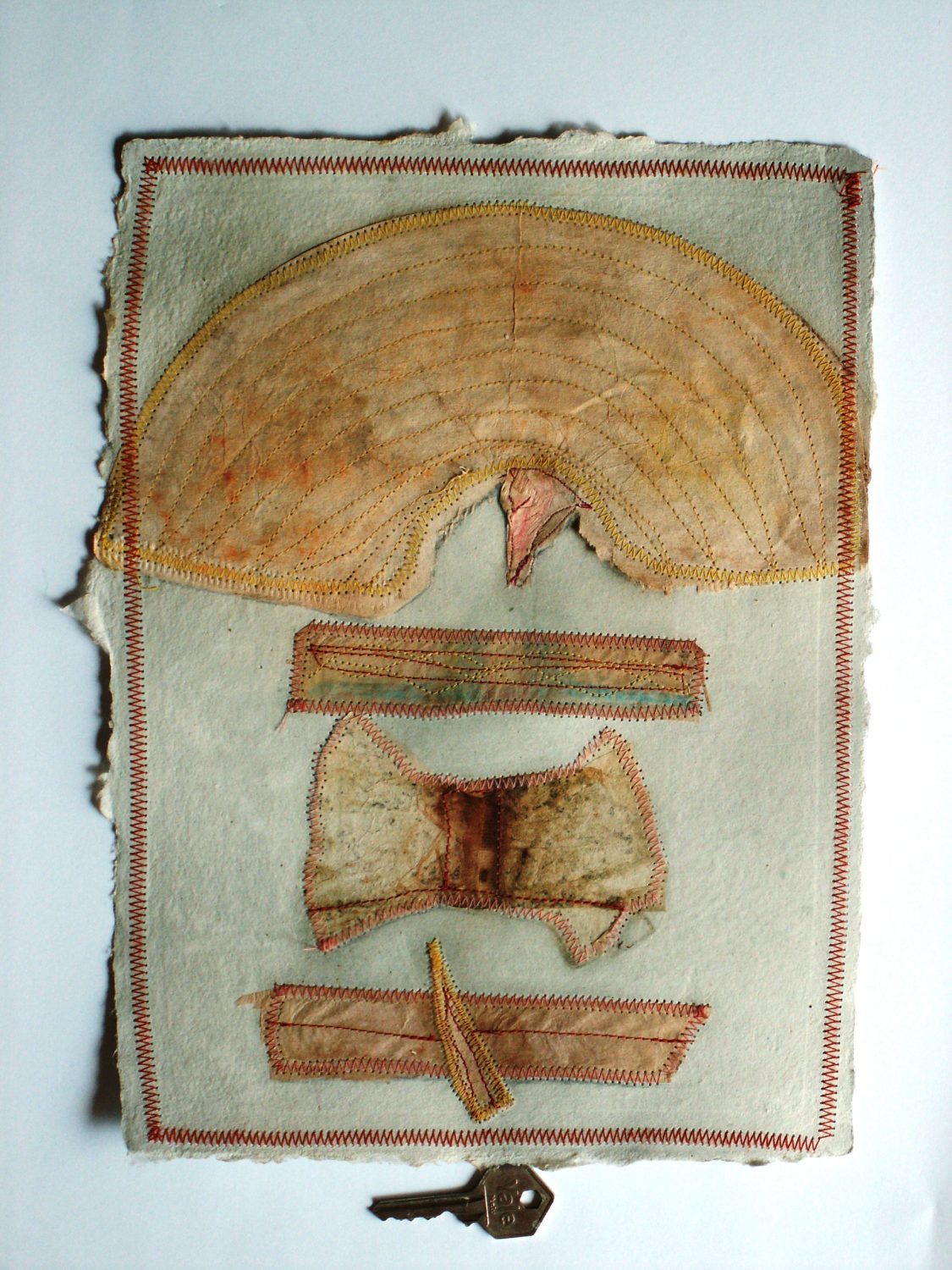Paper and stitch can be an artform in itself, or an excellent way to do studies and experiments for cloth work, or incorporated with fabric and other media. Recycle household ephemera (junk mail, tags, wrappings, bags etc), print your own artwork, use the kids scribbles, buy fancy art papers, or make your own paper. If you’re a purist and want to start your own from scratch, it’s a lot of effort, but worth it. (You’ll need an industrial strength blender, but check local colleges and printmakers.)
Is it that paper is more forgiving, that you can rip out the mistakes, or redo that area easily? Is it less intimidating than cutting into fabric? There’s still a vestige of the mentality that fabric should only be cut if you are certain what it’s for. Paper is a textile though! No matter how many times paper has been recycled, it’s still cellulose fibers.
Serenity Nichols Ibsen, simple but so evocative.
Above: Lizzie Golden‘s amazing scanned and stitched vest.
Sojourn Quilts proves small can be effective with this stitched ACEO.
Paper and stitch can have volume as well, with sculptural and dimensional aspects, by Casa de Dogpoop.(!!!!?)
Above: Esther Cohen’s expressive abstracts, simple shapes and stitching.
Working with paper means a slightly different set of skills, whether by machine or hand. You can’t do french knots because they pop right through, the thread will cut the paper if you yard on it – a slow easy tension is best – and you better make sure that where you poke your needle is where you really want it, unless holes are part of the design :} When you are beading especially, the tension is critical; any knots or snarls or twisted threads can be quite frustrating when a hole happens! The thread also doesn’t “sink”or “hide”as when done on fabric, so be sure you either match your thread to the base or bead, or use the detail of visible threads as a detail. If you are using “fabric paper”, the same applies, though not as rigorously, as the foundation is quite supportive, and stronger with the incorporation of textiley bits. You also can’t scrunch the base to manipulate a needle around or it will crease, tear and just generally be a pain in the Bazotski.
There are of course synthetic “papers” now, just as much fun to work with, and opening up possibilities of heat distortion, more malleability, colour take up and strength. These are spun non woven reconstitutions of plastics. Look for Lutrador, Angelina (not strictly a paper, but a synthetic fiber with amazing applications) , Evolon and any of the fuseables or interfacings.
There are plenty of tutes online for working with paper. Check out Victoria Gertenbach’s tea bag pojagi, or Carol Wiebe how-to’s of making of her astonishing paper quilts. The inimitable Maggie Grey has loads of workshops and books available.
Paper artists: Benjamin Wieler, Patti Pizzuto-Roberts
And a fascinating article from the now defunct FiberArts

~~~~~~~~~~~~~~~~~~~~~~~~~~~~~~~~~~~~
This is the last ARTeries column! Thanks To the Boss Jamie and all the readers!
So long, farewell, Auf wiedersehen, good night,
I hate to go and leave this pretty sight.
So long, farewell, Auf wiedersehen, adieu,
Adieu, adieu, to yieu and yieu and yieu.
So long, farewell, Au’voir, auf wiedersehen,
I’d like to stay and taste my first champagne
So long, farewell, Auf wiedersehen, goodbye,
I leave and heave a sigh and say goodbye,
Good bye/









